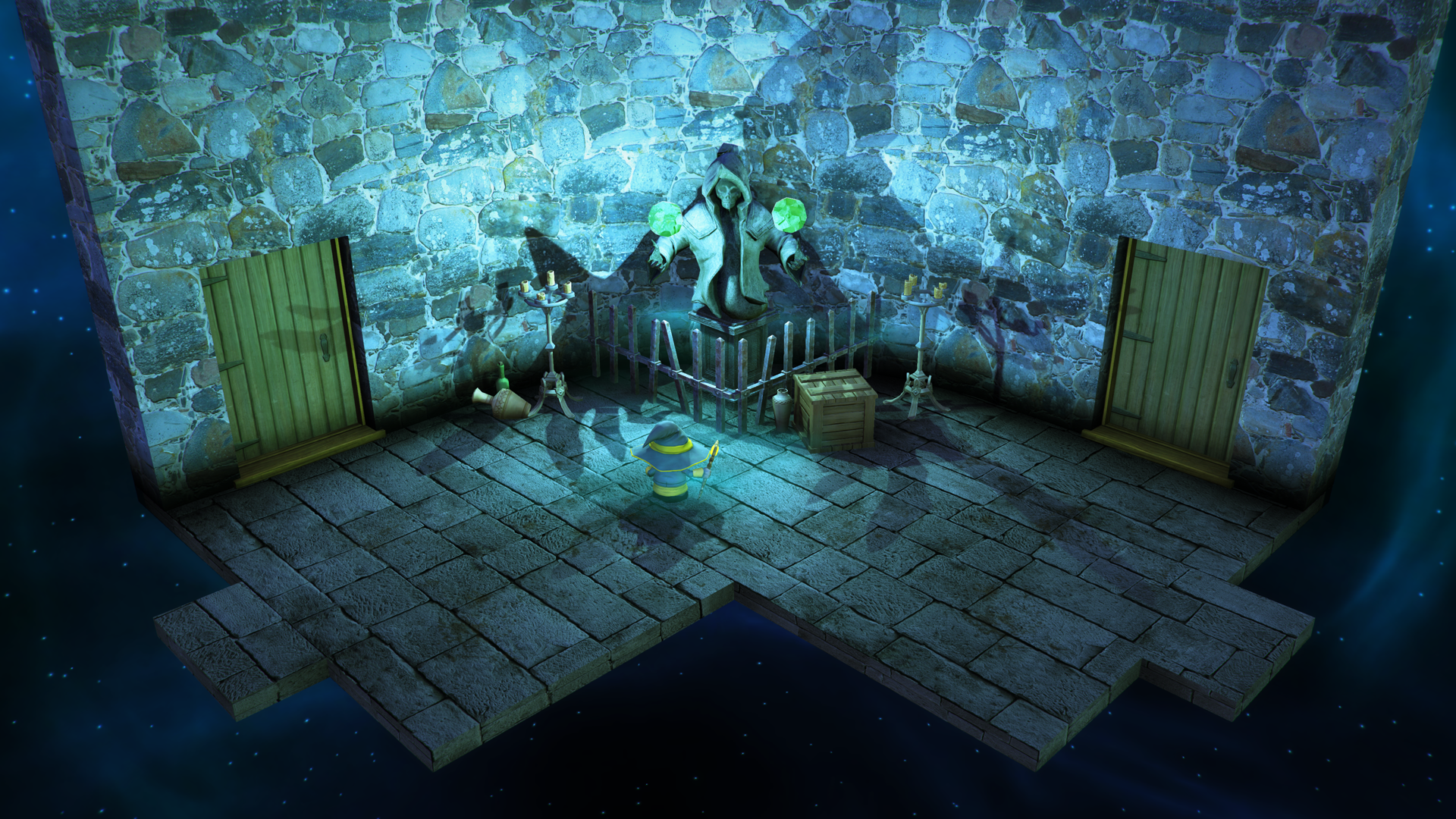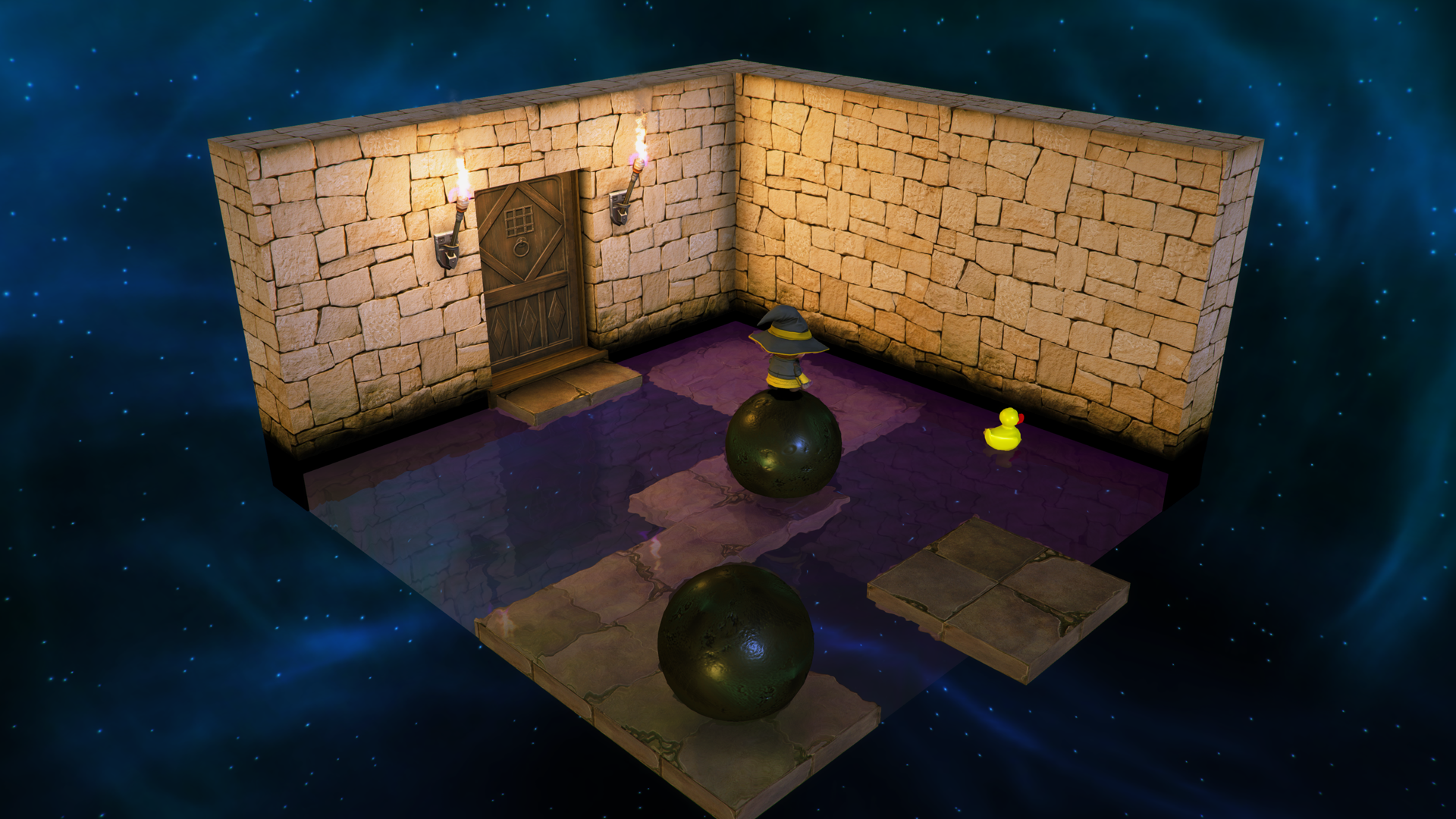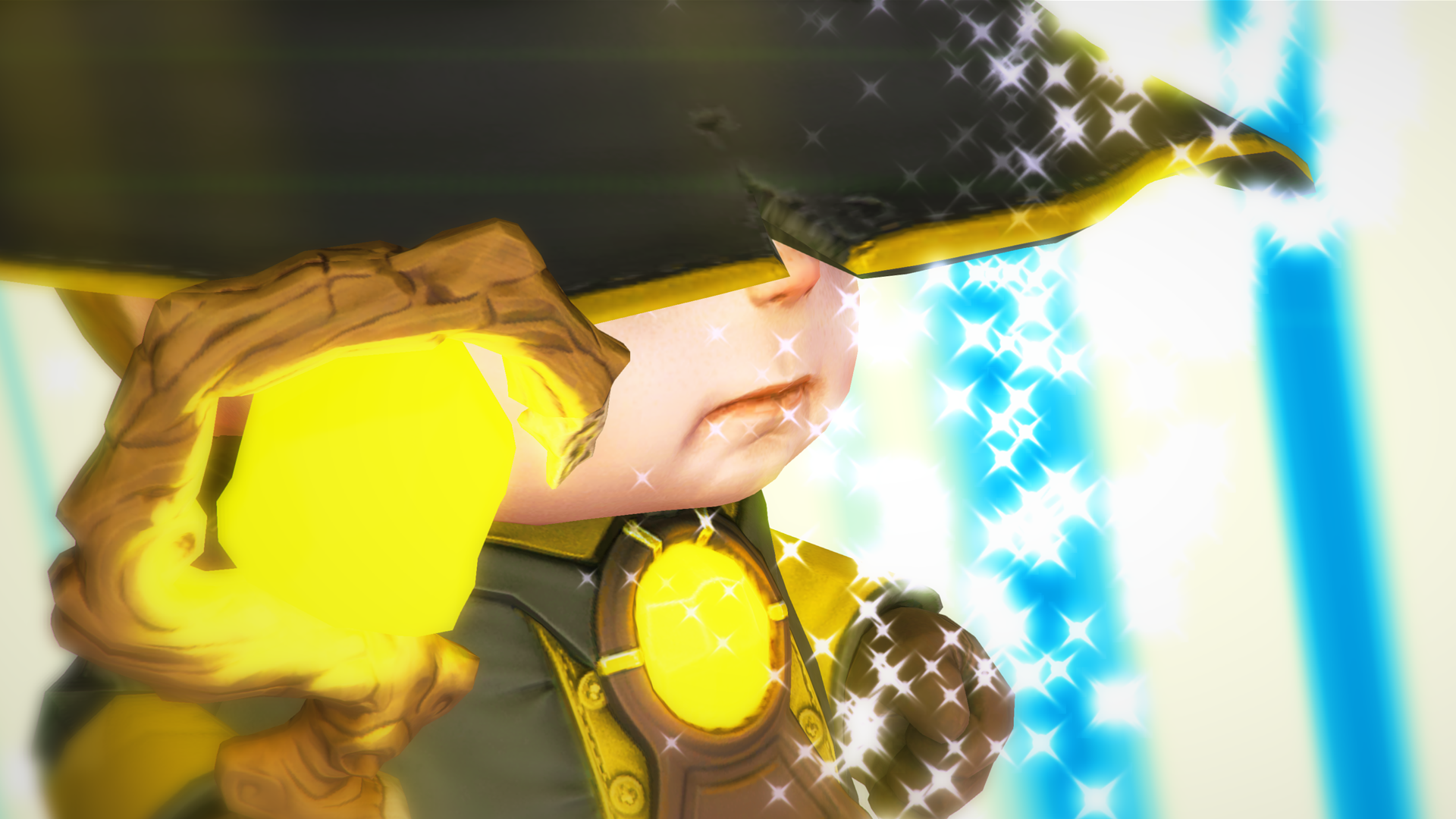Our Verdict
A fun, imaginative platformer that’s full of ideas, but prepare to die, a lot.
PC Gamer's got your back
What is it? A varied collection of isometric platforming challenges.
Developer Triple Eh?
Publisher Rising Star Games
Reviewed on GeForce GTX 970, Intel i7-5820K, 16GB RAM
Multiplayer None
Link Official site
Lumo is a platforming game in the purest sense, inspired by the earliest, rawest examples of the genre. You jump, dash, and weave between, through, and around its many obstacles for no reason other than they’re there. Then when you reach the other side and pass through the door, another one is waiting for you. It’s a test of timing, dexterity, and lateral thinking, with a disarming charm that hides the ruthless cunning of its design. And it’s bloody hard too.
Each screen is a self-contained diorama of death. There are laser grids, bottomless pits, spike-covered cubes, icy floors, twirling fireballs, and other diabolical traps designed to kill you. But there are also switches, pressure pads, cannons, spring launchers, and countless other helpful devices to help you avoid them. It’s an impressively varied collection of inventive, imaginative, and often cruel platforming challenges, viewed from a forced isometric perspective.
You play as a diminutive wizard in a big hat. Early on you can’t do much more than waddle, but after a few simple challenges you earn the ability to jump. And from this point on the platforming gets steadily more difficult until it becomes downright fiendish. You’ll be hopping across tiny moving platforms covered in ice as they bolt back and forth across an electrocuted floor, or side-stepping rotating lasers while a UFO knocks you around like an angry, sentient pinball bumper. And those are the easy rooms.

But they aren’t all like this, and one of the game’s strengths is how it occasionally gives you a break. Some rooms are simpler and designed purely to be fun, like the one decked out like a giant air hockey table that sees you nudging those UFOs into a goal to score points. Or the room that sees you taking command of a cannon and firing balls at a shooting gallery of pop-up gangsters. The game is overflowing with ideas, and there’s such an abundance of clever platforming design and fun, silly mini-games that many of them are used once and never recycled. And if they are, it’s with some new twist.
When you inevitably fall victim to one of the game’s traps, you die instantly and appear back at the entrance to the room. Or, in larger rooms, you might have been lucky enough to hit a rare checkpoint. This makes those moments when you’re halfway through a particularly tricky series of obstacles particularly tense, because one miscalculation or mistimed jump and you’re back to square one. Some rooms took me dozens of attempts to beat, and at times it felt a bit like I was hitting my head against a brick wall.
The problem is that when you respawn, you have to wait for an animation to play. It’s brief, lasting only about a second, but in rooms where you’re dying constantly it quickly becomes a source of frustration. And the noise your character makes when they die—a high-pitched squeal of pain—was so grating at times that I had to turn the sound off. Which is a shame, because the soundtrack, with its lazy hip-hop beats and dreamy ambient synths, is fantastic.

Some rooms involve puzzles, like making a staircase out of fragile blocks of ice that can only be pushed in a certain direction, or stepping on light-up floor pads in a specific order. These are well-designed and offer a nice change of pace from the traditional platforming, and some of the later ones are pretty taxing. The difficulty level is pretty well balanced, but there are a few spikes—particularly in the ice world with its slippy surfaces—that had me swearing under my breath every time I died, which seemed to be every 0.5 seconds.
The forced isometric perspective is inspired by ZX Spectrum games like Head Over Heels and Knight Lore. It certainly gives the game a unique visual identity, but it can make judging the distance between things difficult. Many of my deaths were caused by jumping at a platform and missing it by an embarrassing distance. Or trying to grab a chain swinging in the middle of the room and overshooting it. I would have liked the ability to rotate the camera to get a better sense of each space. You can tilt them left and right ever so slightly, but it’s never enough to make much of a difference.
To make things easier, the game offers a variety of control schemes. One is perfectly suited to the arrow keys on a keyboard or the D-pad on a controller, letting you move precisely along a grid. Another, which seems tailored to the analogue sticks of modern pads, gives you full 3D movement. Both have their benefits, and I found myself switching between them frequently. The 3D movement is better for diagonal jumps, while the grid movement is good for more precise platforming. The good thing about this is that, unlike a lot of platformers on PC, it’s perfectly playable without a gamepad.
Lumo is a charming platformer with a lot of personality, and is absolutely heaving with ideas and imagination. But its old school inspiration extends to its difficulty, which can be occasionally frustrating. The isometric viewpoint takes some getting used to, and the constant dying can get annoying, but get past that and you’ll find a platformer with a lot of heart.
A fun, imaginative platformer that’s full of ideas, but prepare to die, a lot.
If it’s set in space, Andy will probably write about it. He loves sci-fi, adventure games, taking screenshots, Twin Peaks, weird sims, Alien: Isolation, and anything with a good story.



